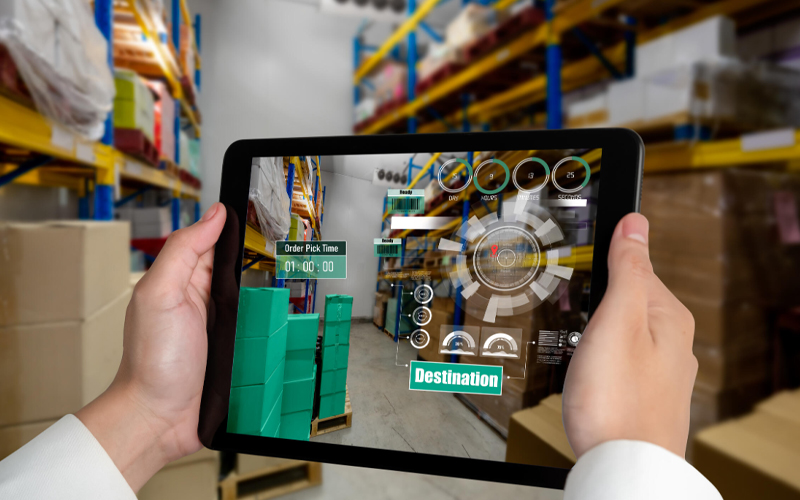With about 2.77 billion shoppers worldwide and online sales set to surpass $6.8 trillion in 2025, e-commerce is shaping customer expectations and market dynamics. For enterprise leaders, order accuracy and fulfilment speed have become strategic imperatives. Choosing between in-house fulfilment and outsourced e-commerce operations can be the defining factor for competitiveness and long-term growth.
The decision affects not just operations; it also impacts financial resilience, customer loyalty, and market positioning. The C-suite and other senior executives must weigh scalability, flexibility, and risk while aligning fulfilment strategy with business goals. Understanding the nuances of in-house vs. outsourced e-commerce operations models ensures decisions serve not only today’s demands but also tomorrow’s opportunities.
in-house vs. outsourced e-commerce operations: pros and cons
In-house fulfilment involves managing warehousing, inventory, order processing, shipping, returns, and customer service within the organisation. This is usually a preferred choice for organisations with smaller order volumes or the necessary resources and infrastructure.
Outsourced e-commerce operations shift these activities to a third-party partner, covering warehousing, picking, packing, delivery, and returns. This is a better choice for businesses experiencing significant order volume fluctuations or lacking internal expertise.
Although both models deliver significant advantages, they also pose critical challenges that executives must weigh carefully.
In-house fulfilment |
Outsourced fulfilment |
|
Pros |
|
|
Cons |
|
|
in-house vs. outsourcing: what works for your e-commerce operations
Selecting the right fulfilment model requires more than comparing features and understanding the pros and cons of in-house vs. outsourcing e-commerce operations. The decision must align with business strategy, long-term goals, and market dynamics. For leaders across the C-suite, the following considerations provide a structured framework:
evaluating costs and long-term impact
Financial analysis is critical when deciding between an in-house vs. an outsourcing model. In-house fulfilment demands high upfront investment in facilities, staff, and technology. Outsourcing converts these into variable costs, which reduces capital expenditure but creates dependency on third-party pricing models. Executives must weigh immediate savings against long-term financial sustainability. A detailed cost breakdown also highlights hidden expenses such as technology upgrades or third-party service charges, helping leaders avoid surprises later.
shaping the customer experience
Every decision in e-commerce operations influences customer loyalty. In-house teams can provide tighter brand alignment and personalised service. Outsourced partners offer speed and efficiency, but risk less control over returns management and customer interaction. Leaders should measure how each model enhances or undermines customer satisfaction. Strong customer experience not only boosts repeat sales but also reinforces brand value across competitive markets.
ensuring scalability and flexibility
Demand fluctuations are now standard in global markets. In-house fulfilment systems may struggle with sudden spikes, while outsourcing e-commerce operations provides scalability without significant investment. However, outsourcing contracts can restrict flexibility. Decision-makers should assess the balance between agility and control. Enterprises must also consider how easily each model adapts to new channels, products, or regional expansions without disrupting operations.
managing risk and compliance
In-house fulfilment centralises control but also concentrates risks in labour shortages, regulatory compliance, or technology failure. Outsourcing distributes these risks but introduces new concerns around partner accountability and data security. A clear risk management strategy is non-negotiable for either model. Compliance frameworks, data protection standards, and contingency planning should all feature prominently in executive decision-making.
From ensuring order accuracy to facilitating real-time tracking, technology defines modern e-commerce operations. Infosys BPM enables enterprises to scale cost-effectively, optimise pricing and promotions, and deliver speedy fulfilment. With digital-first e-commerce solutions, businesses gain both operational accuracy and the flexibility to choose between in-house and outsourced models with confidence.
Choosing the right fulfilment model requires a structured approach from the leadership. Once executives understand the trade-offs, they must translate insights into practical actions that guide fulfilment strategy and future-proof operations. Here are key best practices the C-suite must follow when comparing in-house vs. outsourced e-commerce operations:
- Assess business needs against fulfilment requirements.
- Evaluate internal resources and gaps.
- Analyse growth potential and scalability.
- Align decisions with long-term goals.
- Pilot, test, and refine before full-scale rollout.
conclusion
The effectiveness of e-commerce operations depends on strategic fulfilment choices that combine financial prudence with operational excellence. Both in-house and outsourced models offer value, but success lies in selecting the approach that supports customer experience, resilience, and growth. For the C-suite, this decision extends beyond logistics. It sets the foundation for brand trust, market expansion, and adaptability in an unpredictable digital economy. The businesses that balance cost, scalability, and customer satisfaction today will define the competitive landscape of tomorrow.
FAQ
Beyond standard per-order fees, executives must scrutinize hidden costs like "minimum volume guarantees," integration fees for connecting to ERPs, and penalties for custom packaging requests. Often, long-term contracts include variable fuel surcharges that fluctuate wildly, eroding margin predictability compared to fixed in-house overheads. A thorough Total Cost of Ownership (TCO) analysis is essential to avoid unexpected profitability leaks.
In-house fulfillment gives brands direct control over the "unboxing experience"—a critical touchpoint for customer loyalty. Unlike outsourced centers that prioritize speed over presentation, in-house teams can execute custom packaging, insert personalized notes, and handle returns with a high-touch service level. This direct oversight ensures that every package reinforces the brand's premium positioning and values.
Yes, a hybrid model allows enterprises to keep core, high-margin products in-house for quality control while outsourcing fast-moving or seasonal SKUs to manage volume spikes. This "hub-and-spoke" strategy provides the scalability to handle Black Friday surges without the capital expense of expanding permanent warehouse space. Consequently, businesses maintain agility and customer satisfaction without overextending their fixed asset base.








